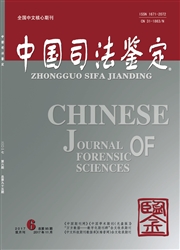

 中文摘要:
中文摘要:
毒蛇咬伤在全球范围广泛发生,在我国更是呈逐年增多的趋势。长久以来,蛇伤的法医鉴定主要依靠病史、临床表现和病理变化,但多数伤者的病史不详且症状复杂。使得蛇伤的法医鉴定比较困难。自20世纪70年代起,医学界涌现了大量研究蛇毒和蛇伤鉴定的新技术。从早期的凝集测试法、免疫电泳法、放射免疫法和酶联免疫吸附法,到近期的聚合酶链反应、荧光免疫法、光学免疫法、生物传感器、基质辅助激光解析离子化质谱和电喷雾离子化质谱,众多新技术的出现,使得通过蛇毒检测进行蛇伤法医鉴定具备了可行性。综述了蛇毒检测的国内外相关研究进展。
 英文摘要:
英文摘要:
Snakebite accidents occur worldwide and increase year by year in China. For a long time, forensic snakebite identification relies mainly on illness history, clinical symptoms and pathological changes. However, most of the sufferers have not seen the snake, and the symptoms of snakebite are so complex that it is difficult to identify snakebite. Since the 1970s, the medical community has invented a large number of new technologies for studying snake venom identification and snakebite injury. From the early agglutination test, immunelectrophoresis, radioimmunoassay, enzyme linked immunosorbent assay to the recent polymerase chain reaction, fluorescence immunoassay, optical immunoassay, biosensors, matrix-assisted laser desorption ionization mass spectrometry, and electrospray ionization mass spectrometry, these technologies make it possible to identify snakebite by detecting the venom in biological samples. In for snake venom detection are summarized.
 同期刊论文项目
同期刊论文项目
 同项目期刊论文
同项目期刊论文
 期刊信息
期刊信息
